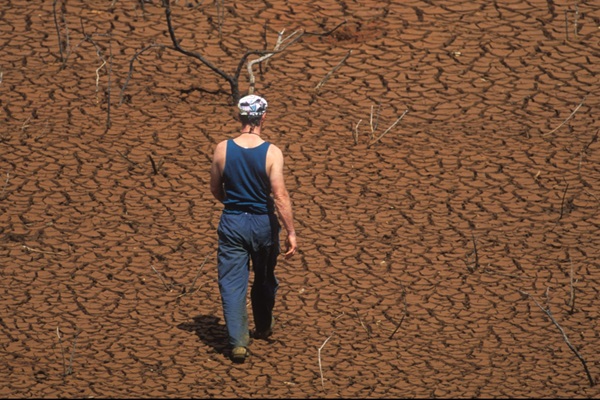
Rome- Experts and policymakers came together at the World Food Forum’s Science and Innovation Forum on Thursday to highlight how new technologies for soil and water management can help to tackle and adapt to climate change.
Hosted by the Food and Agriculture Organization of the United Nations (FAO) the event showcased field examples, strategies and management options in integrated soil and water management that have a direct impact on the livelihoods of small- and medium-holder farmers and their communities.
“We need to develop and strengthen integrated information systems to address pressing multisectoral challenges, which should be available to all – especially to farmers who are the custodians of our natural resources, as well as their final controllers,’’ FAO Director-General QU Dongyu told participants. He noted that FAO addresses these challenges with a focus on transforming agrifood systems through science, technology, and innovation.
The climate crisis is currently threatening the productivity of agrifood systems, affecting the most vulnerable populations and exacerbating inequalities. Soil degradation, loss of water quality, and water scarcity are on the rise, limiting access to fertile and productive soils and water resources, and contributing to food and nutrition insecurity.
Integrated climate-smart land, soil, and water management technologies and practices are considered essential for improving efficiency and enhancing water and land productivity. The event highlighted innovations in re-carbonizing soils, improving soil health, and enhancing water use efficiency. Strategies for promoting integrated governance of natural resources and managing water scarcity were also discussed, with the aim of strengthening the resilience of agrifood systems in the face of the climate crisis.
For example, efficient water use, judicious fertilizer use, reduced pesticide use, and improvements in soil health could lead to average crop yield increases of 80 percent.
Sustainable management of ecosystems in source areas and upper catchments, such as mountains, grasslands, and forests, is also vital for ensuring a reliable and healthy water supply. Governance actions such as supporting innovative technologies like precision agriculture, remote sensing, and big data analytics could enhance the efficiency and effectiveness of integrated soil and water management.
Working towards innovative climate solutions
The event featured a range of experts and notable speakers from different sectors and regions of the world who highlighted several innovations.
In a keynote speech, Rosa Poch, Chair of the Intergovernmental Technical Panel on Soils, highlighted the recent FAO-hosted Global Symposium on Soils and Water, which aimed to find solutions for sustainable soil and water management and food production. Key findings and recommendations from the symposium include increasing public awareness, adopting sustainable practices, monitoring soil moisture, using adapted plants, and accounting for green water (the portion of water in the natural hydrological cycle that is stored in the soil and is available for use by plants) in national water budgets.
Malin Lundberg Ingemarsson, Programme Manager at Stockholm International Water Institute spoke about innovative approaches of restoring degraded soils which can bring synergistic benefits for food security, climate, biodiversity, and water availability. She advocated for a shift from a farmer-focused perspective on these issues to also include pastoralists.
Axel Schmidt, Technical Advisor for the Water-Smart Agriculture program of Catholic Relief Services mention three cutting-edge research areas: 1) Real-time water and soil information at scale through remote sensing, particularly focusing on root zone soil moisture, 2) Fast and cost-effective soil analysis, including handheld devices for on-site, hyper-localized information, and 3) The use of geospatial tools for identifying viable locations for rainwater harvesting.
Federico Truco Chief Executive Officer of Bioceres Crop Solutions said that integrating technology and business model innovations can contribute to regenerative agriculture and the preservation of native ecosystems. His company has engineered drought tolerance in soybeans and wheat using a sunflower gene, aiming to enhance rotational schemes for sustainable intensification of land use and improve water and carbon footprints.
Amarjit Basra, Director and Chief Scientist at OCP Group in the USA emphasized the need for disruptive innovations to drive significant yield enhancements in key food crops. He highlighted the emerging paradigm of doing more with less, focusing on highly efficient fertilizer formulations, such as controlled release or slow-release fertilizers, to improve nutrient use efficiency.
FAO and innovation for soil and water
To ensure global food security while conserving natural resources , the world needs to produce an estimated 50 percent more food by 2050 compared to 2012 levels.
FAO is harnessing innovative technologies such as Artificial Intelligence, machine learning, and Big Data to transform agrifood systems and generate high-quality data for effective water and land use planning, policies, and investments.
For example, The Global Soil Partnership supports advanced tech for assessing soil health, moisture, and fertility to aid science-based decisions by farmers and policymakers.
The FAO's Global Agro-Ecological Zones framework offers a vast database of over 65,000+ geospatial data layers, empowering stakeholders to make informed decisions about crop suitability, yield gaps, and sustainable practices in a changing climate.
FAO is dedicated to the UN Water Action Agenda, promoting cooperation, partnership, capacity development, and catalyzing actions, especially in research and development investment, to facilitate faster and larger-scale international actions.